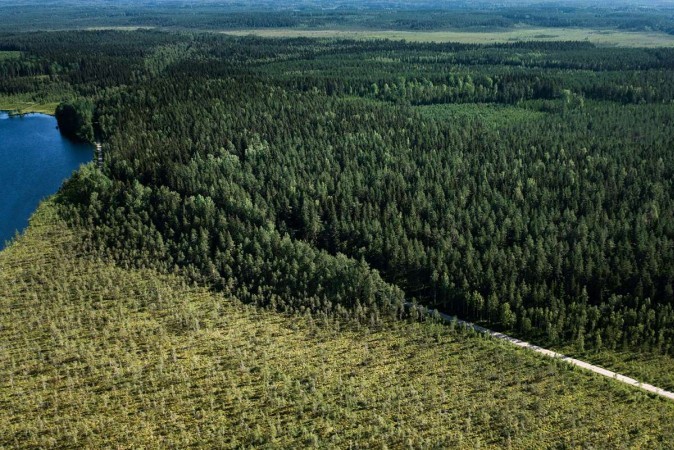 The forest is Finland’s future
The forest is Finland’s future
A deeper understanding of the forest ecosystem has led to new possibilities for the forestry industry that we are just beginning to explore.Finland has always lived off its forests. The forests have provided the building materials for our homes and the game and lingonberries for our tables. They also provide us with wood pulp – a valuable resource that has brought wealth to Finland.
Growing up in south-eastern Finland, an important region for the pulp and paper industry, I saw first-hand how this wealth benefited entire communities.
But the forestry industry has also faced criticism. In the past, I often heard complaints about how the industry destroyed forests and looked at trees as a source for pulp and nothing more. About how the mills polluted the waterways, destroyed fish habitats, and was generally not considered an industry with much opportunity. We have come a long way since then.
Today, the industry has emerged as a role model of sustainable operations. In my hometown, we regularly see salmon in the river alongside the pulp and paper mills, swimming upstream to spawn. The Nordic model of sustainable forest management is being talked about around the world.
Through a process of continuous learning, we have understood that not every practice suits every environment. The new generation of forest owners and industry players concern themselves not merely with wood pulp production statistics, but with taking a 360-degree view of healthy and ethical forest management.
From soil nourishment to looking after the fungi present in root systems, no effort is being spared to ensure the well-being of trees. Biodiversity is at the heart of the industry’s operations, and it plays a key role in improving the growth and health of trees. For instance, planting both hardwood and softwood in the same place promotes the healthy growth of the trees while ensuring the presence of versatile flora and fauna, helping to keep pests in check. This intricate network meets the various needs for forest usage through sustainable sourcing of raw material, helping strike a perfect balance.
Nurturing nature’s biodiversity is going to be critical in the coming years as the world tries to move towards a future beyond fossils. No other material is as versatile and as sustainable as wood. Did you know that birch bark, which protects a tree from ultraviolet radiation, is also a source of xylitol, a chemical that helps protect tooth enamel? Or that our new biorefinery, under construction in Leuna, Germany, will produce wood-based chemicals? For example, lignin strengthens the composition of automotive materials and plywood in the same way that it helps bind cellulose fibres together in a tree. The potential is endless.
For us to uncover and make full use of the versatility of wood, we need to continue to invest in expertise and technologies – from seedling production and process engineering to materials science and marketing. The new ways to use wood require the industry to look for innovative partnerships beyond those found in traditional forestry to unlock new business models. Building this infrastructure may take time and resources, but we must trust in the ecosystem and its capacity to take us into a new era.
The world of forests has proven much richer than I could ever have imagined when I was gazing at the chimney of the papermill in my home town many years ago. I am convinced that the significance of forests will continue to grow, not just for Finland’s future, but for the world’s future in the years to come. We just need to find the right way to use its gifts efficiently and sustainably.
